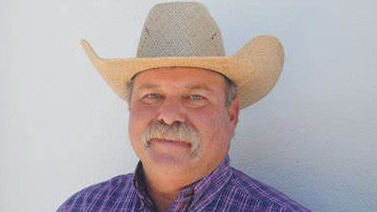
Texas Animal Health Commission (TAHC) officials confirmed equine infectious anemia (EIA) in seven Quarter Horses on a single Midland County premises. These are the first confirmed cases of EIA in Texas this year.
The horses were confirmed positive after testing was performed to meet regulatory requirements. The premises has been quarantined and will not be released until the TAHC’s requirements are met. TAHC staff are working closely with the owner and local veterinarian to monitor potentially exposed horses and implement biosecurity measures.
“These cases are a good reminder that EIA is present in our state, good biosecurity should always be a priority, and the importance of required EIA testing for equine event participation and congregation continues to be invaluable,” said Dr. Andy Schwartz, TAHC Executive Director and State Veterinarian. “Investigation of cases indicate that humans are often playing a role in the transmission of equine infectious anemia in Texas equine. The TAHC encourages strong sanitary practices along with disease education and awareness to help prevent further spread.”
EIA is an incurable, infectious viral disease spread through blood-to-blood contact, not through proximity or direct contact. The virus can be transmitted from an infected equine to an uninfected equine by biting flies. Additionally, people can aid in the transmission by using contaminated medical equipment, such as needles, syringes, IV sets and medications. When equipment is contaminated with blood from an infected horse it can spread the disease to healthy, unexposed horses when used again.
The most common clinical sign of acute EIA is fever, which often precedes the development of other signs. In chronic cases, symptoms such as weight loss, weakness, anemia, and swelling of the lower legs, chest and abdomen may occur. Veterinarians and producers play an important role in stopping the spread of EIA and other bloodborne equine diseases by reporting sick equine.
The TAHC would like to remind horse owners that all Texas equine participating in Texas events must have a negative EIA test, performed by a private veterinarian, within the past 12 months. Equine owners who frequently participate in events with equine from other states are encouraged to speak to their veterinarians about Extended Equine Certificate of Veterinary Inspection’s (EECVIs). The TAHC allows veterinarians and horse owners the option of a six-month health certificate, if a current EIA test has been provided.
Horse owners are required to keep the EIA test document or “Coggins papers” and have them available when traveling with horses. Contact your private veterinarian for testing.
Any additional Texas EIA cases this year will be posted on the Equine Disease Communication Center (EDCC) website, www.equinediseasecc.org/alerts/outbreaks.
For more information on EIA please visit www.tahc.texas.gov/news/brochures/TAHCFactsheet_EIA.pdf.
***
CUD CHEWING PROVIDES A BENEFIT: HERE’S WHY
Cows were made to eat forage. We give them other stuff, but none of it comes under the entrée heading. Everything else is strictly a side dish.
Built into this need for forage is the ruminant’s ability to chew its cud. According to Donna Amaral-Phillips, an extension dairy specialist with the University of Kentucky, dairy cows spend almost eight hours each day chewing their cuds. That’s a total of almost 30,000 chews daily.
Cud chewing is the regurgitation of feed that has already been consumed and swallowed. The feed bolus is rechewed to an acceptable particle size and then reswallowed.
“When cows chew their cuds, they secrete saliva,” Amaral-Phillips explains. “This saliva contains a natural antacid that helps buffer the rumen. Proper buffering of the rumen allows a cow to digest forages better and to eat more feed, which helps her produce more milk.”
For optimal cud chewing and saliva production, forage particle length becomes an important consideration. Amaral-Phillips suggests that 15% to 20% of forage intake needs to be longer than 1.5 to 2 inches.
Forages that are processed too short from chopping or mixing will result in less than sufficient cud chewing for adequate saliva production. On the flip side, too much long-cut forage will result in an excessive amount of time spent cud chewing, which reduces feed intake.
“Cud chewing often can be used as an indicator of the health of a dairy herd,” Amaral-Phillips notes. “Cows that do not chew their cuds enough may have lowered milkfat tests, become lame, or have other digestive upsets such as twisted stomachs or displaced abomasums. All of these problems directly affect the profitability of a dairy operation,” she adds.
The dairy scientist suggests the following recommendations to ensure cows get adequate effective fiber to stimulate cud chewing:
1. Feed high-quality forages, which stimulate cud chewing while also allowing for high feed intakes. Cows are ruminants and evolved to utilize forages, not grain, as their primary feed source.
2. Make sure that 15% to 20% of the forage is greater than 2 inches in length when a cow eats. In other words, 4 to 5 pounds of hay goes a long way in stimulating a cow to chew her cud.
3. Ensure the mixing wagon is not pulverizing the added forage. Mix just long enough to ensure a uniform ration. Check the total mixed ration (TMR) and compare the particle size against the original feed ingredient (hay, haylage, or corn silage). If the silage in the TMR mix is a lot smaller than the original forage, mixing time may be too long. If alfalfa hay is mixed in the TMR, add it last to minimize its mixing time.
“The most important thing you can do is observe your cows,” Amaral-Phillips asserts. “Generally, we expect to see 60% to 70% of cows actually chewing their cuds when they are resting. Pay attention to fresh cows to see that they are chewing their cuds. Taking time to carefully observe your cows will pay dividends in recognizing potential problems before they become major headaches,” she concludes.